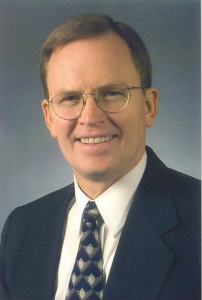You’re accessing archived content
This is archived content from the UIT website. Information may be outdated, and links may no longer function. Please contact stratcomm@it.utah.edu if you have any questions about archived content.
Hess talks details for 2015-16 strategic plan

Steve Hess, chief information officer
By Emily Rushton
University Information Technology (UIT) has created a strategic plan for the upcoming fiscal year – but what exactly needs to happen to ensure the plan succeeds?
To start, there are five strategic goals that UIT will be focusing its efforts on: improving faculty and student success, promoting business efficiencies and effectiveness, advancing research computing, supporting health care, and strengthening internal operations – all of which largely support the University of Utah’s overall mission.
Steve Hess, Chief Information Officer, emphasized the importance of UIT’s strategic goals aligning with the overall goals of the University.
“Alignment is critical, because IT should not be driving what it is that we do,” he said. “The administration should. We should be trying to do everything we can to sustain and support the University’s goals.”
To provide good service, UIT needs to improve its processes to complete projects in a timely way and meet service level agreements. Hess recognized that many of UIT’s processes need improvement.
“When somebody leaves and a process breaks down, then we don’t have a process,” he said. “The person was the process. We need processes that endure even when people leave.”
“If we have policies, processes, and finances in place, it’s amazing how productivity can go up and how much more fun it is to work,” he added.
In addition to process creation and improvement, Hess hopes to create a culture shift within UIT, first and foremost by emanating the very values identified in the strategic plan.
“Values change the culture when they are rewarded,” he said. “I’d like us to be a happy and productive culture. Not stressed out, and not just barely getting things done until the next thing happens.”
One trend Hess would like to move away from is the tendency to jump into projects without knowing the total cost of ownership, the business case, and the life cycle cost, in addition to not having clearly defined goals and a service owner.
“We need a business case before we before we jump into a project,” said Hess. “Then, our employees can work on the project without trying to resolve how it’s paid for and who will have the responsibility to support the service that results from the project.”
This will in turn allow UIT to be more proactive – rather than reactive – and also help the organization manage its capacity to complete projects and operate services.
“That’s a big thing I’d like to get into our culture,” he said.
Another pressing need is a comprehensive review of campus IT services. This will determine how much is spent on IT, how to better organize the services offered, and what services should be provided centrally or by departments.
“We’ll be focusing on knowing what our capacity is to do projects," said Hess. "We will retire services we no longer need."
As an organization that is primarily seen as a free service, understanding the true cost of services is important.
"We need to know our cost and run UIT like a business," said Hess. "If we don't communicate our costs, then people's expectations and requests will be unrealistic."
There are a number of significant projects to complete this year, and while all the projects identified in the strategic plan are important, Hess singled out a few that are extreme priorities: student/faculty support projects, Procure to Pay, the HR PeopleSoft upgrade, research computing, NextNet, and service management improvement.
Internally, Hess would like to see UIT get on a sound financial basis, improve its governance structure, and develop its talent by spending professional development dollars in an efficient way.
Overall, Hess feels optimistic that UIT will be able to achieve these goals.
“I think we have a really good staff,” he said. “I’m very hopeful that things will get even better for them as we lift our expectations and improve our processes.”
He acknowledged that UIT is in a catch-up period right now, which tends to happen when there is a change in leadership.
“I really appreciate the fact that the staff is working so hard to get caught up,” he said.
For UIT staff, Hess had some encouraging words to share.
“They should know that the administration, and the CIO, recognize that what they’re doing is important and that we are willing to put resources behind our projects to get them accomplished,” he said. “And we are also willing to resolve political and governance issues so that staff can focus on their work.”
